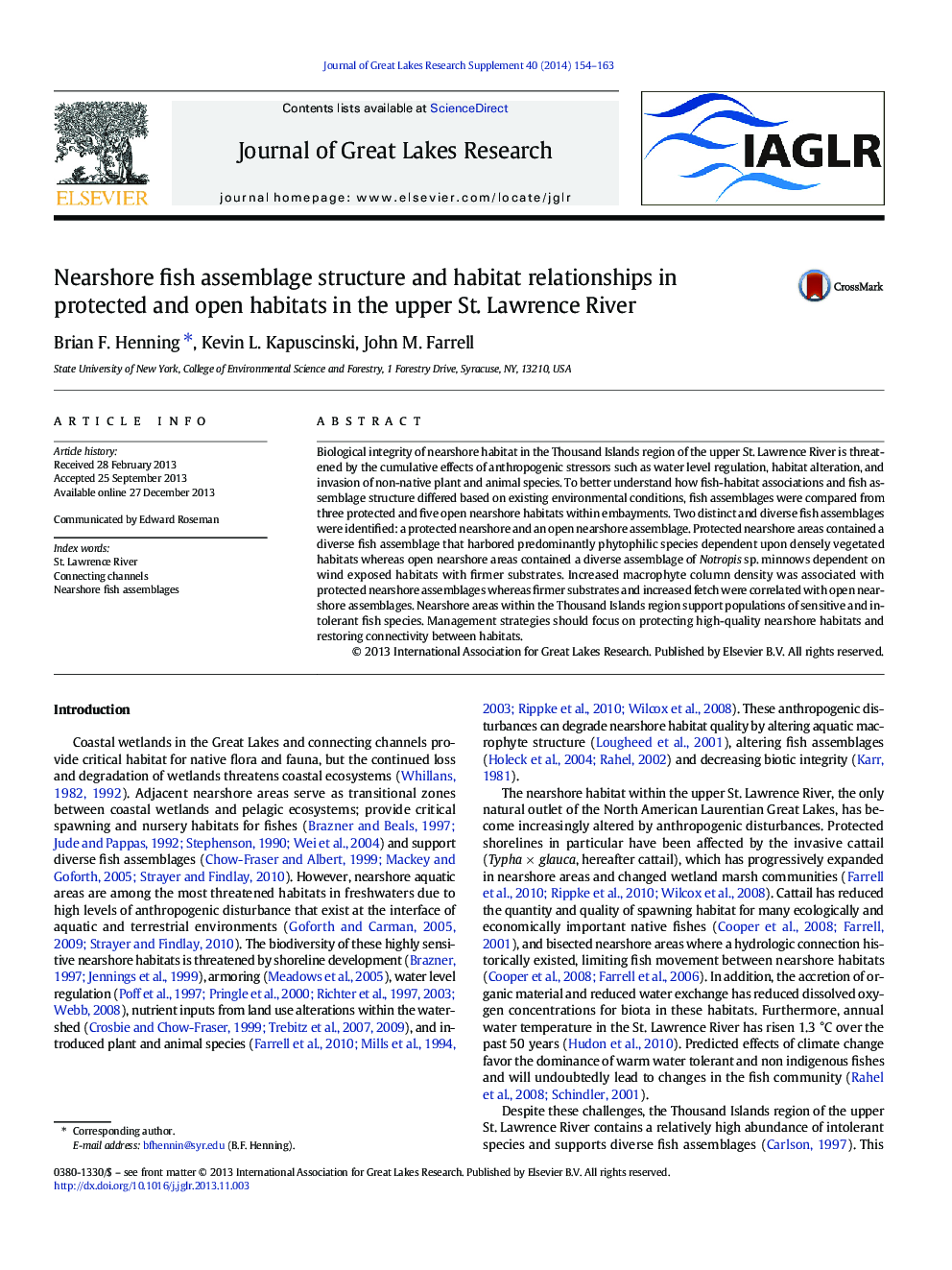| Article ID | Journal | Published Year | Pages | File Type |
|---|---|---|---|---|
| 4398437 | Journal of Great Lakes Research | 2014 | 10 Pages |
•Fish assemblages differed between protected and open nearshore habitats.•Substrate, fetch, and macrophyte column density influenced assemblage structure.•The Thousand Islands region supports sensitive and intolerant fish species.
Biological integrity of nearshore habitat in the Thousand Islands region of the upper St. Lawrence River is threatened by the cumulative effects of anthropogenic stressors such as water level regulation, habitat alteration, and invasion of non-native plant and animal species. To better understand how fish-habitat associations and fish assemblage structure differed based on existing environmental conditions, fish assemblages were compared from three protected and five open nearshore habitats within embayments. Two distinct and diverse fish assemblages were identified: a protected nearshore and an open nearshore assemblage. Protected nearshore areas contained a diverse fish assemblage that harbored predominantly phytophilic species dependent upon densely vegetated habitats whereas open nearshore areas contained a diverse assemblage of Notropis sp. minnows dependent on wind exposed habitats with firmer substrates. Increased macrophyte column density was associated with protected nearshore assemblages whereas firmer substrates and increased fetch were correlated with open nearshore assemblages. Nearshore areas within the Thousand Islands region support populations of sensitive and intolerant fish species. Management strategies should focus on protecting high-quality nearshore habitats and restoring connectivity between habitats.
